PORT’S CALLING
Tales from Saldanha — can the town find its green future? (Part 1)
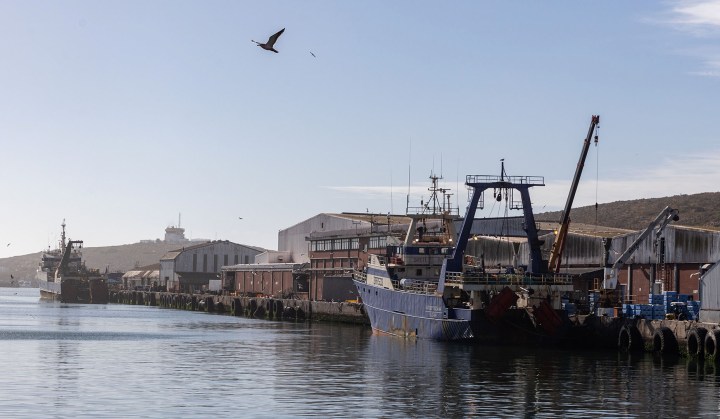
Like stepping on to Mars, everything on the road into Saldanha is red – trees, buildings, bushes, even some seagulls. Ominously called ‘the red dust’, this iron ore residue mined elsewhere is transported by train into Saldanha Port.
Located fewer than 160km from Cape Town, Saldanha Bay holds many realities – there are major tourist attractions nearby like the West Coast National Park, it is an important industrial hub, it has a long history of small-scale fishing stretching across its towns, and more recently it is attracting large green economy investments.
There are high expectations of what the region can mean, not just for Saldanha Bay but also for the country, in terms of green energy and development.
With the industrial history of Saldanha on the one hand and a possible green economy future on the other, the region is at an inflection point. But a mistrust lingers in many Saldanha communities where the environmental and social costs of previous pathways of industrial development are still felt. Are there ways to ensure the future path does not repeat old mistakes?
From red dust to green gold
Industrial development over the past century has shaped Saldanha Bay – from commercial fishing and processing, to steel production and mining exports, the area continues to draw investment and people to work in its factories and port.
The Saldanha Bay local municipality includes the town of Saldanha itself as well as the towns of Hopefield, Saint Helena, Paternoster, Langebaan and Vredenburg.
The growth of industry and the town of Saldanha has been a complex process before, during and after apartheid, with both state-driven intervention and large-scale private sector investment. As detailed here, by the 1930s, agriculture and commercial fishing were established there, with military operations expanding from the early 1940s. Sea Harvest – still Saldanha’s largest employer today – was established in 1964.
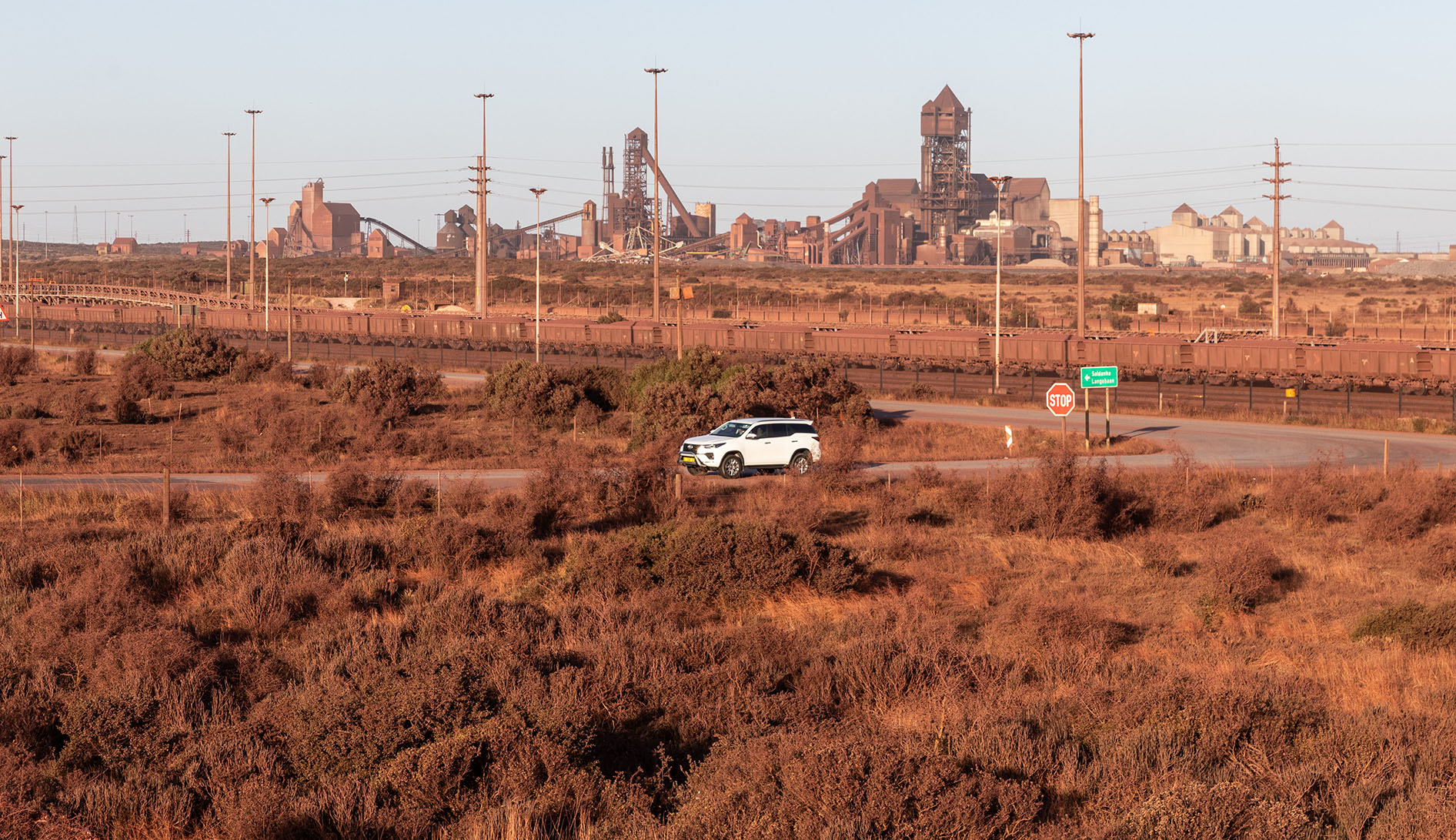
Red dust from the trains at Saldanha Port covers everything on the road into Saldanha.
The Saldanha port – Africa’s deepest natural port – is run by Transnet Port Terminals (TPT). It was built in the early 1970s, along with the Sishen-Saldanha railway line connecting to iron ore mines inland.
More than 10 years ago, frustrated residents created the Red Dust Action Group. Wilhem Herbst, an active local resident who played a leading role in the group when it started, explains it was not a matter of opposing exports, but rather that TPT needs to manage the port properly and fulfil its commitments to reduce the pollution coming from the port.
While TPT reports show that emissions are not exceeding legal limits, as Wilhem says, “you just have to look outside to see that it is still a major problem”. According to the Red Dust Action Group’s current chairperson, Kyle Dods, they are seeking a review of the limits set out in current legislation. They see this as an urgent matter since manganese is also now being exported, raising new fears of potentially toxic “black dust”.
South Africa’s Just Energy Transition Implementation Plan notes several projects that have been granted Strategic Integrated Project status in the area, primarily green hydrogen projects.
Read more in Daily Maverick: Green hydrogen mega-project stokes community fears of dire economic and environmental losses
One of them involves green hydrogen production from wind and solar energy. This project is being developed in collaboration with Freeport Saldanha, a state-funded industrial complex aiming to become a green hydrogen energy hub. Conray Joseph, executive for stakeholder management at Freeport Saldanha, says: “We are committed to attracting investments towards this goal.”
There are also plans to repurpose ArcelorMittal, South Africa’s steel factory. The factory was established in the late 1990s and became one of the largest employers in Saldanha. It was mothballed in 2020 – largely due to pressures of South Africa’s national electricity and port crises – leaving large-scale unemployment and despondency in its wake.
The aim is to use the factory to produce green hydrogen for “green steel” production. General manager Aldrich Louis explains that the initial feasibility phase is set to begin this year.
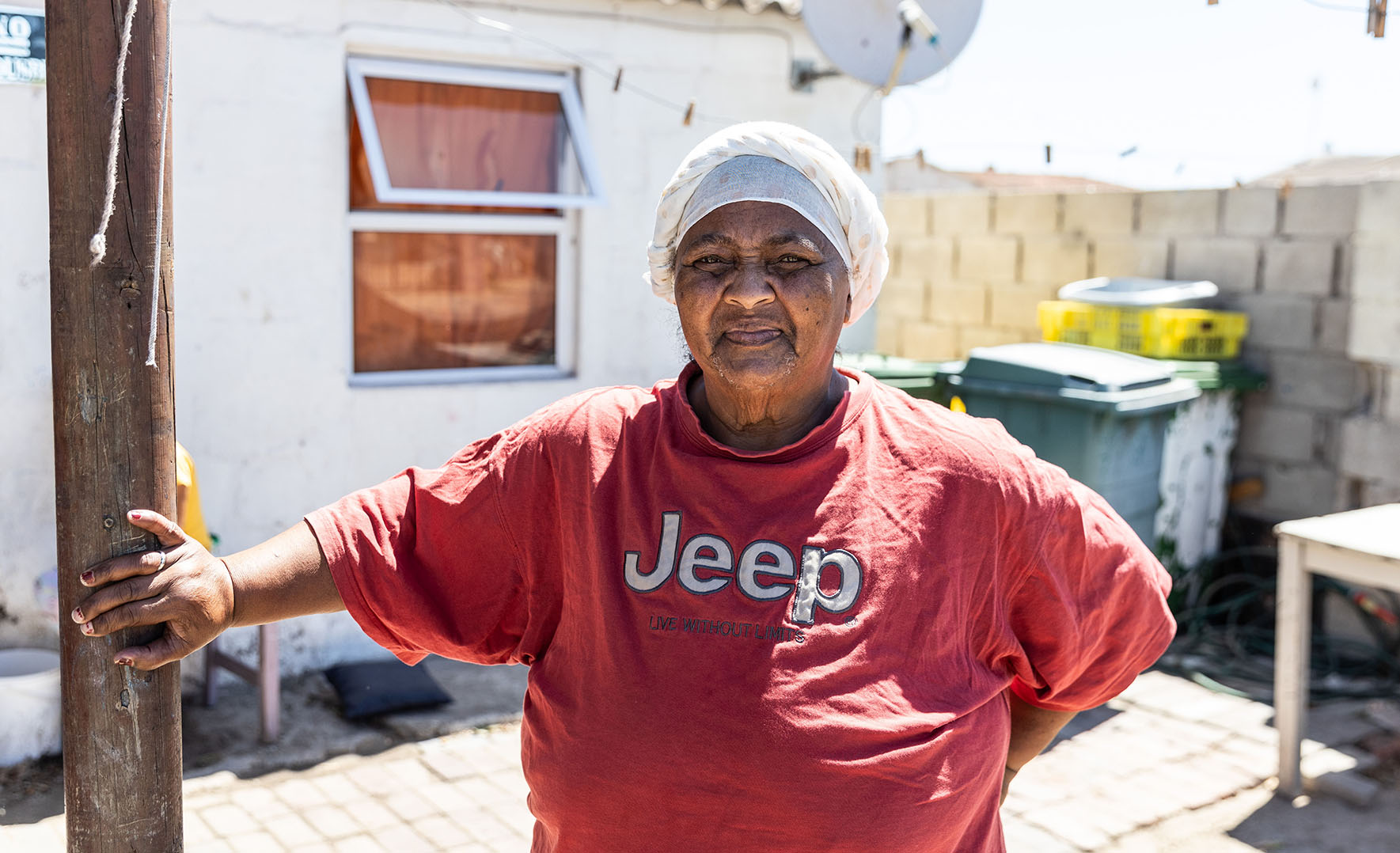
Solene Smith is a 67-year old fisherwoman and an active resident in Langebaan. (Photo: Ashraf Hendricks)
The role of the local economy
When and whether these green economy plans will come to fruition – and what their impact will be if they do – remains unclear.
Many in Saldanha are sceptical about a positive and widespread impact. Green hydrogen projects, for example, may prioritise capital-intensive industries that primarily require highly specialised labour. In addition to potentially limited employment opportunities, even though some of these projects are “green” they pose possible environmental threats, such as water desalination, that residents are unconvinced could be managed, given the persistence of old ones like the red dust.
There is another world though that is so often invisible when talking about “big” plans in South Africa and which offers a way to ensure that no one is left behind – economies that prioritise local communities, players and enterprises.
Solene Smith is a small-scale fisherwoman from Langebaan who has worked in the fishing industry for most of her life. A member of a national network of fisherfolk called Coastal Links, she actively supports the plight of small-scale fishers – from challenging the drawing of Maritime Protected Areas along the West Coast, which she says prevents them from fishing, to opposing the Karpowership project because of the risk to marine life and livelihoods.
From her house in Langebaan, Solene recounts a 20-year battle against an opaque, inefficient and unjust permitting process – from the fight just to get permit rights at all, to dealing with extreme limits placed on small-scale fishers as to species and numbers that don’t allow them to earn a living.
There are also numerous reports of corrupt practices and declining capacity within the national Department of Fisheries, where systems seem to be designed to benefit those with political connections. It is not unusual to hear of people in Johannesburg holding such permits, even if they had never even been to the West Coast.
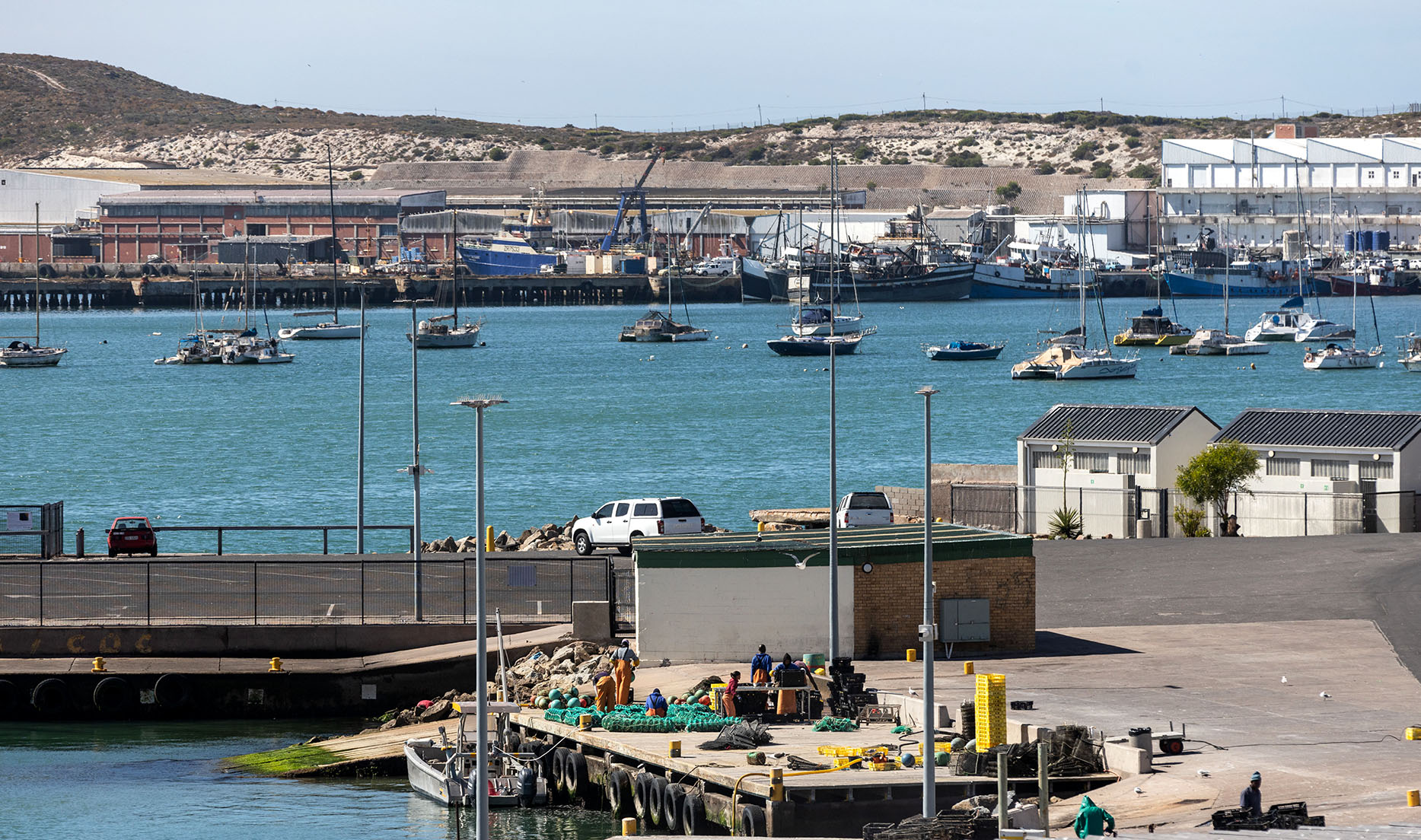
The old harbour is largely unoccupied. In the morning, it is common to see the cleaning and packing of farmed oysters. (Photo: Ashraf Hendricks)
A thriving local economy is good for all
According to Dhesigen Naidoo, climate adaptation lead at the South African Presidential Climate Commission, the strategic location and industrial background of the area presents an opportunity “to reorganise and revamp economic assets, in tandem with the security asset, and lead the charge on energy transition”.
Similarly, Saldanha Bay mayor Andre Truter says that part of his vision for Saldanha is to “become an electricity generation hub for the country as it has the infrastructure, it’s close to a trade route and has storage facilities”. Indeed, plans are under way for a major tender from the Saldanha Bay Municipality to generate 100MW of new electricity for residents.
Read more in Daily Maverick: How the best-run municipality in SA gets the numbers right
And while small-scale fishing, along with other sectors like tourism, has always been integral to the area’s local economy, Natalie Jane van Wyk from the Green Connection highlights that at this juncture they really “can unlock great potential for sustainable and long-term employment in the region”.
But how can that potential be unlocked? In the second piece of this three-part series we look at what is needed for the local economy to thrive within a new green economy, while helping to meet the needs of all who live and work in Saldanha. DM
Marcela Guerrero Casas and Dustin Kramer are the co-founders of Local South. They work between Cape Town and Bogotá to create sustainable, dynamic and liveable cities in the Global South.
This work was supported by Heinrich Böll Stiftung Southern Africa.








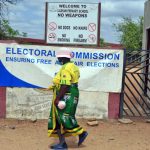
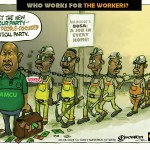

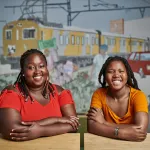









Nothing wrong with Saldana exept the closure of the Saldana steel works. Without work and with eskom ussless no future for our town. The only prople that belive in that green shit is the rich. Normal people need a job to raise a family. eskom and railways have killed our town